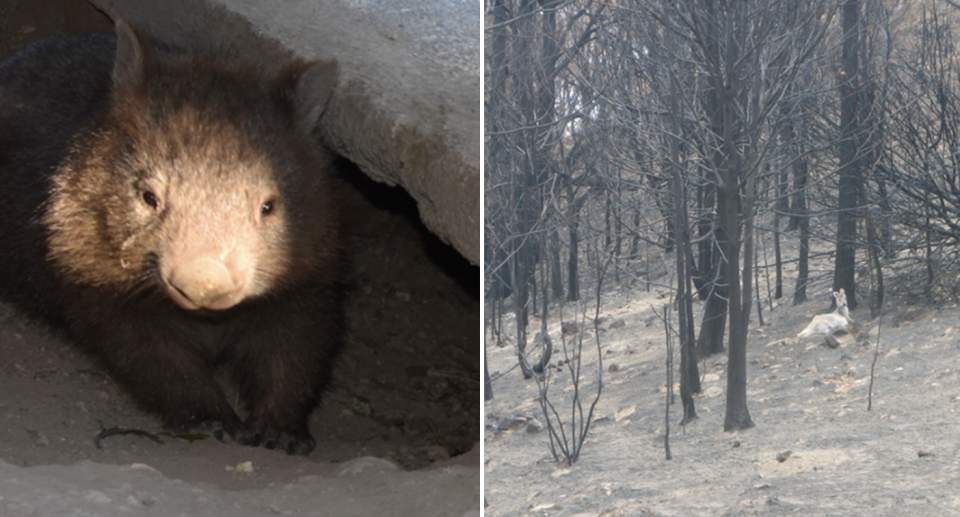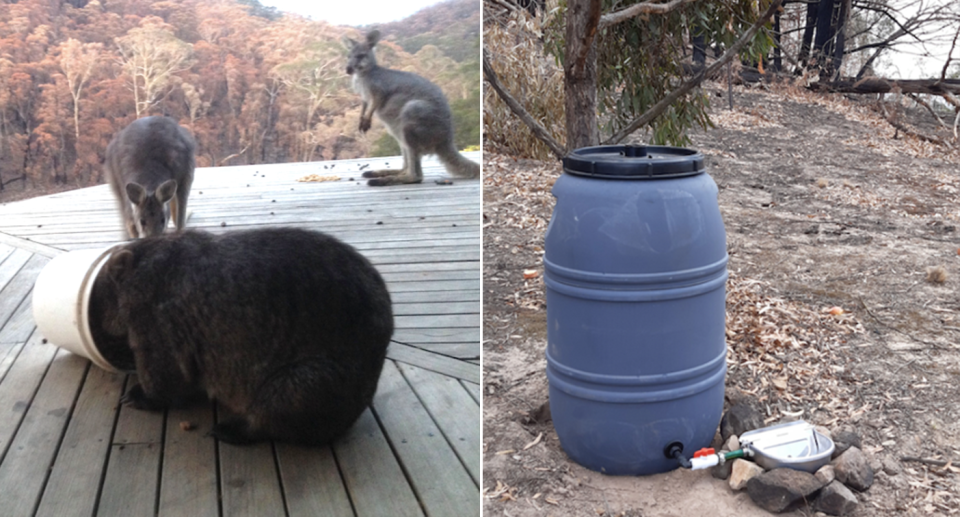'I beg you': Kind act for stricken animals backfires with tragic consequences
Sandwiches, carrots and hay dumped by “well meaning” people trying to help wildlife could be having a devastating effect.
Rocklily Wombats sanctuary owner Dianna Bisset worries that food left by the roadside will draw hungry animals towards oncoming traffic.
Working against time, Ms Bisset has issued a number of urgent pleas on social media for people to stop.
“I can’t keep cleaning this all up, please please stop,” she wrote.
“Please stop, I beg you.”

The posts have attracted a number of comments from people also concerned about the practice.
“I'm sure whoever is doing this has no idea how devastating this can be,” wrote one person.
“Terrible! Really hope they stop doing it!” said someone else.
‘They’ve all been incinerated’
Ms Bisset told Yahoo News Australia that the fires have killed most of the wildlife in the Wombeyan Caves area, 220km southwest of Sydney.
“There’s not lot a lot here, they’ve all been incinerated, not even carcasses,” she said.
“There’s just nothing, I can’t find anything.
“We’ve lost 33 or our 39 of our released wombats.”
Helping animals can be a complicated operation and Ms Bisset would like to see people wishing to help make contact with their local wildlife agency for information.
With rain predicted in the coming weeks, the hay once wet may turn mouldy and become toxic to those who eat it.
In addition, Ms Bisset fears the seeds from vegetables and stock feed dumped on private land and national parks could lead to weed infestations.

“They’re not looking at what’s actually in the area because they don’t have the skill,” she said.
“They’re just chucking it everywhere thinking they’re doing the right thing.
“But really, they’ve upset the balance of what we’ve been doing here.
“It’s not helpful, it’s really, really not helpful.”
‘The next day they’re dead’: Wildlife
In her region, Ms Bisset believes the biggest killer of surviving kangaroos and wallabies in her area is not starvation, but a crippling stress induced condition called myopathy.
“They look pretty good one day and the next day they’re dead,” she said.

“We had a thunderstorm not long after the fires and suddenly we had a rush of deaths.
“They’ve had one really big event (in the fires) and it hasn’t really set in and then the thunderstorm killed it because it was too much.”
'An incredibly important species': How wombats help other wildlife survive bushfires
‘See you on the other side’: Kangaroo sanctuary owner's dramatic rescue from bushfires
Outrage over plan to bulldoze 'Bear Hill' koala habitat amid bushfire crisis
Woman spends thousands saving 'beautiful' feathered bushfire survivor
'It hurt me deeply': Wildlife carer's tough decision to save a life
As if these reasons were not weighing on Ms Bisset enough, there is also one more fear that fills her with dread.
The bushfires, she believes, have killed off much of the feral pig population leaving hunters starved of meat to feed their dogs.
If wildlife is drawn to private land or state parks, she worries unofficial feeding stations could be targeted by shooters.
“People just think they’re doing the right thing, their heart’s in the right place, but they’re not looking long term,” Ms Bisset said.
Do you have a story tip? Email: newsroomau@yahoonews.com.
You can also follow us on Facebook, Instagram and Twitter and download the Yahoo News app from the App Store or Google Play.




